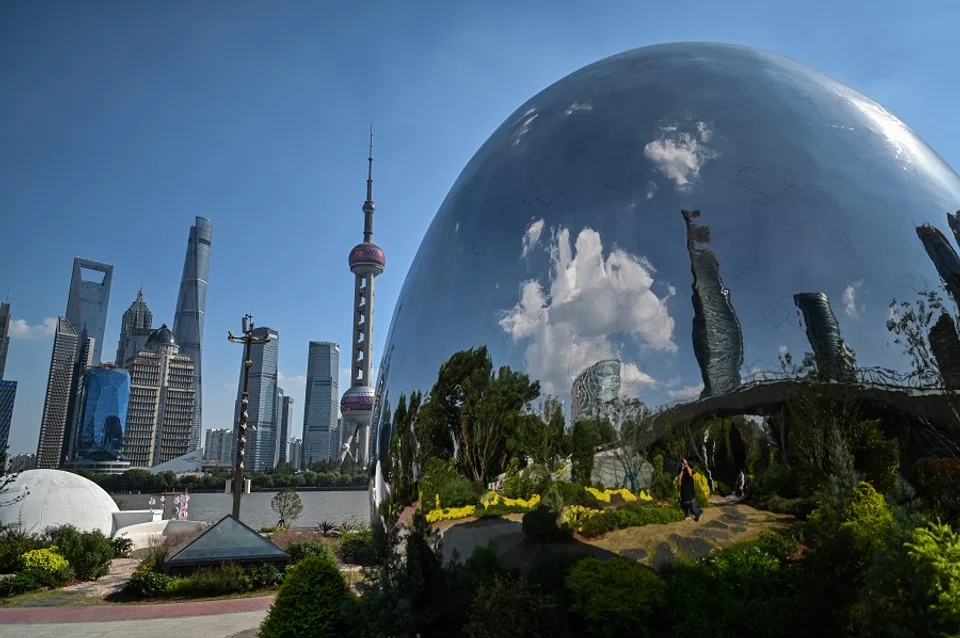China joining the CPTPP: It's a matter of time
Zhang Rui analyses that there are more pros than cons to China's entry to the Comprehensive and Progressive Agreement for Trans-Pacific Partnership (CPTPP) whether one looks at it from China's individual economy, regional industrial chains or global income gains. However, sizeable obstacles stand in the way of its entry, not least US-led political roadblocks, even if the latter is not currently a member of the reconfigured CPTPP. China's internal system and regulations will also have to change to meet the rigours of the high-standard CPTPP. Can China play the long game and will the world truly move closer towards Asia-Pacific economic integration?

China's latest economic diplomacy move is to formally apply to join the Comprehensive and Progressive Agreement for Trans-Pacific Partnership (CPTPP). Unlike previous regional free trade agreements in which China was invited to join, the country took the initiative this time round and applied for entry on its own. However, joining the CPTPP will undoubtedly be a tumultuous journey for China.
Whether in bringing benefits to the member states of the CPTPP or in creating opportunities for itself, China's accession to CPTPP should be considered a great merit.
As 95% of goods traded between CPTPP member countries would be tariff-free, China's products can enter 11 countries with zero tariffs. Based on research done by the Chinese Academy of Social Sciences, under different scenarios, China's membership in the CPTPP will enable it to achieve an export growth of 4.69% to 10.25% and a GDP growth of 0.74% to 2.27%.
Much to gain from China joining CPTPP
In addition, a study by Peterson Institute for International Economics (PIIE) shows that if China joins the CPTPP, it could have additional income gains amounting to US$298 billion by 2030. At the same time, CPTPP member states would gain a deep relationship with the world's largest exporter of goods and soon world's largest consumer market, gaining greater business opportunities as a result. The PIIE further estimates that the CPTPP would generate global income gains of US$632 billion annually by 2030 if China joined the grouping.
The benefits of the CPTPP will also go beyond the CPTPP itself, and possibly result in the realisation of the Free Trade Area of the Asia-Pacific (FTAAP).

With China's entry, both CPTPP member countries and China will reap benefits in terms of the expansion and configuration of the industrial chain. Most of the member countries of the CPTPP are advanced economies. If China participates in the CPTPP, there could be a matching and alignment of industries creating new industrial chains, and also opportunities for making new industrial connections with fellow member states. The industrial structure could then be elevated to the mid- to high-end segment of the global value chain, as member countries work to remove roadblocks and plug gaps in industrial chains.
On the other hand, China is now a major economy with a relatively comprehensive industrial structure in the global manufacturing industry. It has a one-third share in intermediate goods trade, and acts as a hub of global industrial and supply chains. This structure allows CPTPP member countries access to huge end-user markets and also enhances the breadth and security of the industrial chain, thereby helping to revitalise and strengthen the competitive advantages of intra- and inter-industry trade in the region.
The benefits of the CPTPP will also go beyond the CPTPP itself, and possibly result in the realisation of the Free Trade Area of the Asia-Pacific (FTAAP). Now that the Regional Comprehensive Economic Partnership (RCEP) is about to take effect, it would form a parallel track with the CPTPP for achieving greater Asia-Pacific economic integration.

As it is, seven countries in the CPTPP are members of both the RCEP and the CPTPP. Thus, it is not difficult for both sides to engage in negotiations for the enhancement and integration of the agreements. In addition, as there are many overlapping trade rules in both deals, even if the standard requirements in the areas of e-commerce, intellectual property, competition policy, government procurement and so on are different, they could converge in the future.
But more importantly, member states of the Asia-Pacific Economic Cooperation (APEC) have already collectively endorsed "The Beijing Roadmap for APEC's Contribution to the Realisation of the FTAAP" in 2014. Moreover, apart from Papua New Guinea and the US, APEC member states are either members of the RCEP or the CPTPP. Thus, the FTAAP has a broad member base. It can be envisaged that with China's addition to the CPTPP, the grouping's bridgehead role in advancing the FTAAP would be stronger and more stable. Furthermore, this would also lead to an earlier realisation of the economic integration of the Asia-Pacific region.
Obstacles to China's bid to join the CPTPP
However, although China's membership in the CPTPP will be a great boon to regional economic cooperation, China's entry into the grouping may not be smooth sailing. On the contrary, it will likely be a long and arduous journey mainly due to existing historical factors, as well as complicated webs of interest between China and CPTPP member states. At the same time, new member states that have applied to join the CPTPP will have to undergo one-on-one negotiations with each of the existing members and gain a unanimous vote of support before it can join. This suggests that several obstacles lie ahead of China's quest to be part of the CPTPP.

Firstly, hindrances from the US. The predecessor of the CPTPP was the US-led Trans-Pacific Partnership (TPP). The TPP acted as an important pivot for the US's "rebalance towards Asia-Pacific" strategy in addition to its goal of keeping China in check. However, the multilateral mechanism of the TPP was in opposition to former US President Donald Trump's unilateral ways, and Trump withdrew from the TPP as soon as he took office. Following this, Japan took the lead in finalising the CPTPP with all 11 member states.
While China has not yet joined the CPTPP, the US will nudge firm allies like Japan, Australia and Canada into deliberately obstructing China.
US and existing members could play a spoiler role
As for whether to rejoin the CPTPP, Biden's latest stand is "no hurry". But if China wants to apply to join the CPTPP, the US will definitely not just sit by. Right now, Biden is trying to build an Asia-Pacific alliance including India and Japan. While China has not yet joined the CPTPP, the US will nudge firm allies like Japan, Australia and Canada into deliberately obstructing China. These countries will quickly get in line with the US in targeting China, so that China will not have a smooth path from applying to join the CPTPP to holding negotiations.
Another thing is the main members might create trouble and make things difficult. As developed economies, Japan, Australia, and Canada have a greater say in the CPTPP. Coupled with the UK - set to join in 2022 - these countries either have a history with China or political differences, trade frictions or diplomatic disputes with China. It will not be easy to get them to allow China to join the CPTPP.
In particular, Japan, as a leading member of the CPTPP, will lose out in terms of status and economic scale if China joins, which is precisely why Japan was the first to find issues with China proposing to join the CPTPP. Many Japanese officials made public statements to look at whether China met the requirements to join, while Deputy Prime Minister and Minister of Finance Taro Aso sharply questioned whether China was ready to join.

Similarly, Australian Minister for Trade, Tourism and Investment Dan Tehan cited China's sanctions against Australian exports, saying that China went against the World Trade Organization (WTO)'s principles and was not suited to join the CPTPP. It is apparent that while the CPTPP does not have obvious geopolitical objectives like the TPP, when it comes to stopping the spread of China's influence and disrupting China's joining the CPTPP, the main members can be totally in sync.
The other members are also either undecided or have their preferences. Of the 11 CPTPP members, apart from Singapore and Malaysia who have shown clear support, Mexico, Vietnam, Brunei, and New Zealand have not clarified their position. And except for Mexico, China has bilateral free trade agreements (FTAs) with the other countries, and negotiations should not be difficult, but when it comes to China-US, China-Japan, and China-UK issues, these countries mostly sit on the fence, or distance themselves from China.
Meanwhile, one can understand that these other CPTPP members have to consider the positions of the core members to show support for the group. Thus, when it comes to China joining the CPTPP, while they behave like fence-sitters, they may be quietly falling in line with the core members, which means that it will be difficult for China to make it into the CPTPP.
China would have to make deep domestic changes
Finally, the difficulty and complexity of changing the rules. Admittedly, the CPTPP is currently the highest-standard FTA in the world, especially in terms of criteria relating to e-commerce, intellectual property rights, competition policy, and government purchasing, and China does indeed have room for improvement.
...as a trans-Pacific FTA, if the CPTPP lacks China, it cannot be said to be either a success or complete. The wise choice is to work together towards integration.

While China proposing to join the CPTPP can be seen as a proactive move to seek a benchmark, that does not mean China will make unprincipled compromises or change its stand. This means that negotiations between China and any CPTPP member will go through many rounds of difficult adjustments, and the process will be long.
Also, even if negotiations with member countries are all settled, China still has to amend and improve its laws and trade regulations, in line with commitments and requirements. This alone would take time, and joining the CPTPP by 2030 would be an optimistic goal for China.
In fact, the CPTPP has not closed its doors and will not close its doors to any country, and has aimed to act with openness and acceptance. So based on the ethos of the group, there is zero possibility that the CPTPP will reject China upfront.
For China, while there is still a long way to go for it to become a CPTPP member, sincerity and patience will bring it to the finish line. At the same time, as a trans-Pacific FTA, if the CPTPP lacks China, it cannot be said to be either a success or complete. The wise choice is to work together towards integration.
Related: 'Driving the blade inwards': Why China may join the CPTPP | China's true intentions in wanting to join the CPTPP | China has entered the 'gilded cage' of RCEP and is considering the CPTPP. What's next? | Shaping rules of the future: The goal for China's third opening up | Mainland China and Taiwan: The political hot potato of their CPTPP bids



![[Photos] Fact versus fiction: The portrayal of WWII anti-Japanese martyrs in Taiwan](https://cassette.sphdigital.com.sg/image/thinkchina/3494f8bd481870f7c65b881fd21a3fd733f573f23232376e39c532a2c7593cbc)

